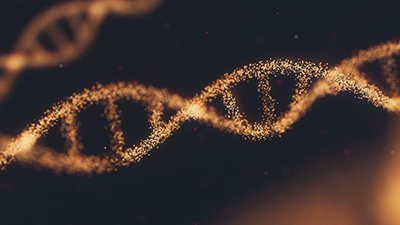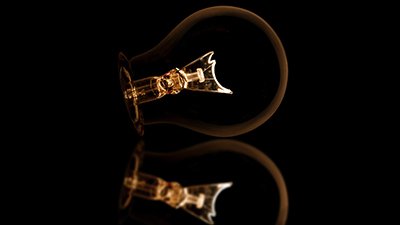Mozart—Made in a Rat’s Image?
New Smithsonian Exhibit
It’s amazing how many assumptions lie behind evolutionists’ efforts to reconstruct the past based on skimpy evidence that exists only in the present.
The Smithsonian Institute in Washington, D.C., USA, has launched a dazzling new mammal exhibition, featuring Morgie, allegedly a 210-million-year-old rodent-like creature that the Smithsonian calls “Mozart’s ancestor’!
The Behring Hall of Mammals, made possible by a philanthropist’s $100-million pledge1 to help revitalize the Smithsonian, is actually a restoration of the hall’s original grand design, including a soaring 54-foot-high ceiling. (Over the years, the grand hall had been walled off into smaller sections for offices and other uses.)
Why spend $20 million on an exhibit?
The driving goal of this exhibition? The November issue of Smithsonian magazine explains. The museum wants to tell visitors the “epic story” of how mammals—characterized by “hair, mother’s milk and three inner-ear bones”2—became so diverse.
A centerpiece in this epic story is “the mother of all mammals,” the rodent-like creature Morganucodon oelheri, or “Morgie,” which the Smithsonian says lived 210 million years ago. Smithsonian gives this date as a fact, without discussion or debate.3
The Secretary of the Smithsonian Institute, Lawrence M. Small, giddily announced this new exhibit in the current Smithsonian magazine, with the claim that we should be grateful for the twists and turns of evolution, which made Mozart in the likeness of Morgie:
“Given that this rodentlike creature was likely the ancestral source of mammalian genes, be grateful for all the subsequent mysterious, disconcerting turns evolution took as mammals contended with conditions on earth over a couple of hundred million years. The family lost Morgie, but it did, in time, gain Mozart.”4
So what is the basis for Smithsonian’s confident declaration that Mozart came from a rat?
The article “The Mother of All Mammals” gives a hint: “An artist and scientist collaborated to build the first ever 3-D model of the oldest known mammal, a shrewlike creature called Morgie.”5 If you look closely, you’ll see just how much “artistic license” was required in this collaboration.
Here are some tell-tale phrases: “no complete skeletons,” “I time traveled,” “I imagined,” “probably sported a fur coat,” “may have nursed its young” and “probably was nocturnal,” etc. Perhaps the pinnacle of this pretense was the paleobiologist’s request that the artist “make the head a bit bigger to reflect a large brain in relation to body size, one of the defining characteristics of mammals.”
It’s amazing how many assumptions lie behind evolutionists” efforts to reconstruct the past based on skimpy evidence that exists only in the present. But the visitors to the Smithsonian won’t be told anything about this “creative” reconstruction—they’ll just see what appears to be a real creature.
Is Morgie your mother … and your god?
Despite the assumptions and guesswork, the artist is pleased with the work of his hands, and affectionately calls Morgie “our mother.”
The Smithsonian exhibit has actually put her on a pedestal, surrounded by her supposed descendants. The curators are hoping that, “once the new hall opens this month, visitors will be able to reach out and touch their oldest ancestor” (almost like an idol in a temple for the evolutionist religion).
Bible-believing Christians, on the other hand, have a different view of Mozart’s origin, based on the facts.
Bible-believing Christians, on the other hand, have a different view of Mozart’s origin, based on the facts—an eyewitness account written by the Creator Himself. (God says in Genesis 1 that land animals, like rodents, and humans first appeared on Day 6 of creation, about six thousand years ago.)
Answers in Genesis’s mission is to help the church to counteract the virulent anti-biblical propaganda of powerhouses like Smithsonian. Upholding the authority of the Bible against this onslaught is the vision behind AiG’s various resources, such as this website, Answers magazine and the Creation Museum, being built near Cincinnati, Ohio, USA. The museum will devote 50,000 square feet of space to proclaiming true biblical history.
Do you realize that one man is donating $100 million to the Smithsonian, and that $20 million of this will be for a new exhibit that will tell people that Mozart came from a rat? Incredible!
AiG, on the other hand, will spend about $9-10 million on 200 state-of-the-art exhibits to proclaim biblical truths. This low cost is possible because of the generous gifts of time, equipment and finances from God’s people, and, just as importantly, because the Lord is bringing key people to AiG to construct exhibits less expensively “in house.” Volunteers and staff share the vision to build a unique center that will uphold the authority of the Bible and rebut the humanistic “halls of propaganda” that are destroying our once-Christian western culture.
Footnotes
- California businessman Kenneth E. Behring has offered the museum $100 million, including $20 for restoring the mammal wing.
- Small, L., New hall on the Mall, Smithsonian, <www.smithsonianmag.si.edu/smithsonian/issues03/nov03/small.html>, November 2003, p. 14.
- See Mammal-like Reptiles: Major Trait Reversals and Discontinuities for a detailed rebuttal of the fallacies behind the supposed “mammal tree,” which begins with Morgie.
- California businessman Kenneth E. Behring has offered the museum $100 million, including $20 for restoring the mammal wing.
- Mathews, Marjorie, The mother of all mammals, Smithsonian, <www.smithsonianmag.si.edu/smithsonian/issues03/nov03/mall.html#morgie>, November 2003, p. 44.
Recommended Resources

Answers in Genesis is an apologetics ministry, dedicated to helping Christians defend their faith and proclaim the good news of Jesus Christ.
- Customer Service 800.778.3390
- © 2024 Answers in Genesis






